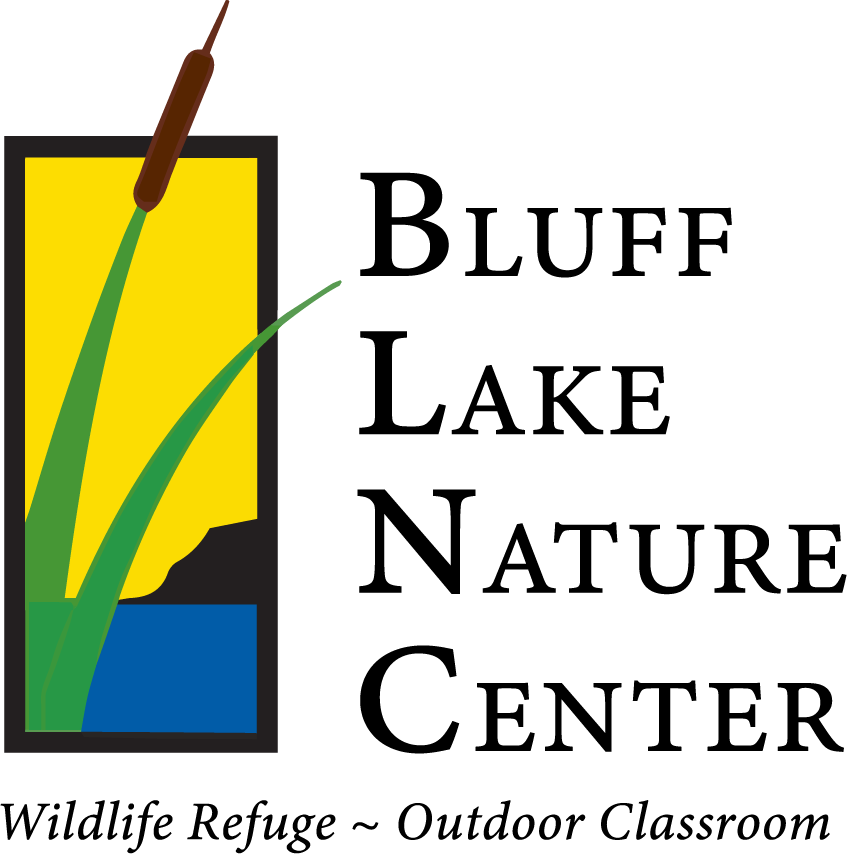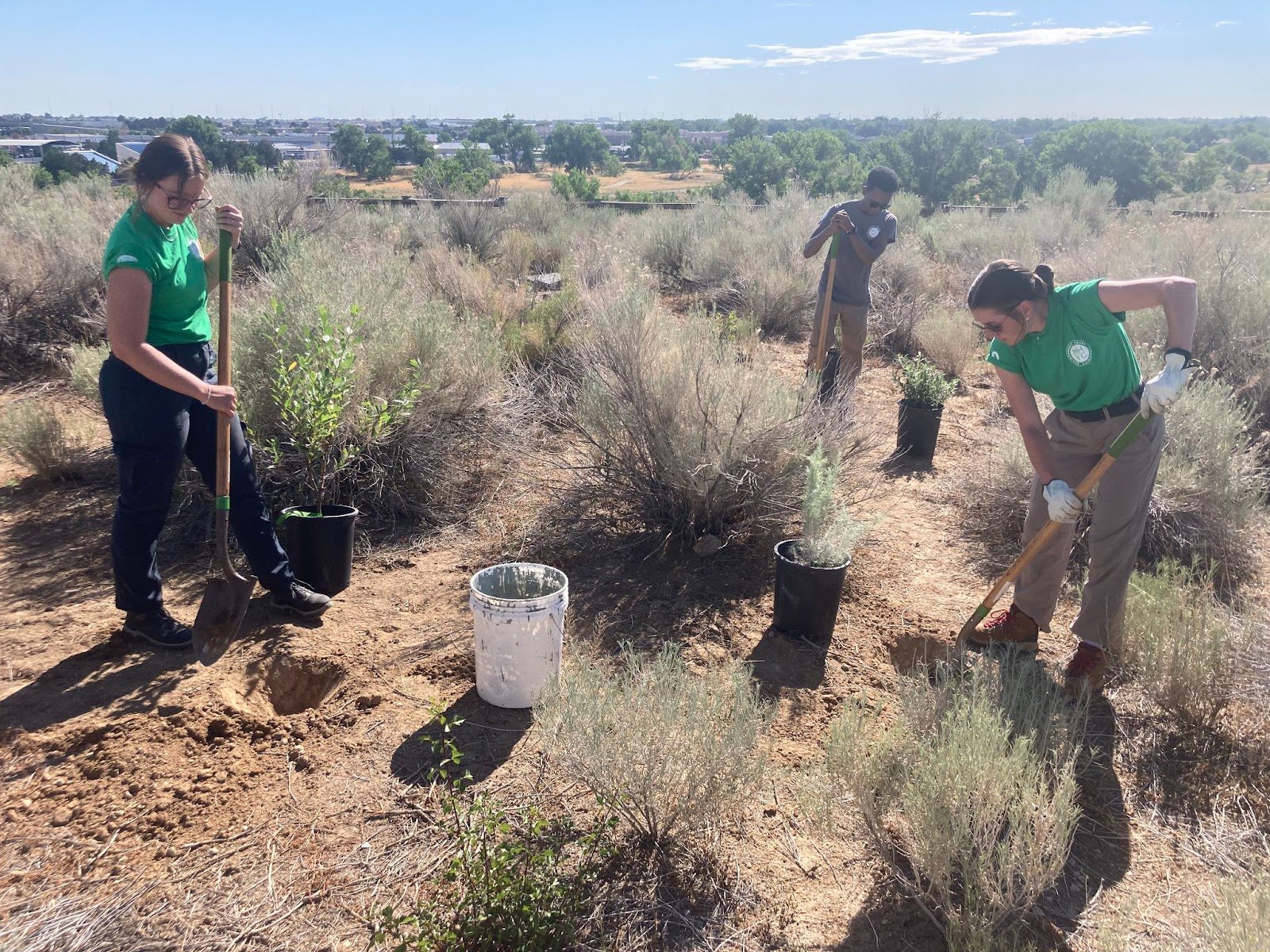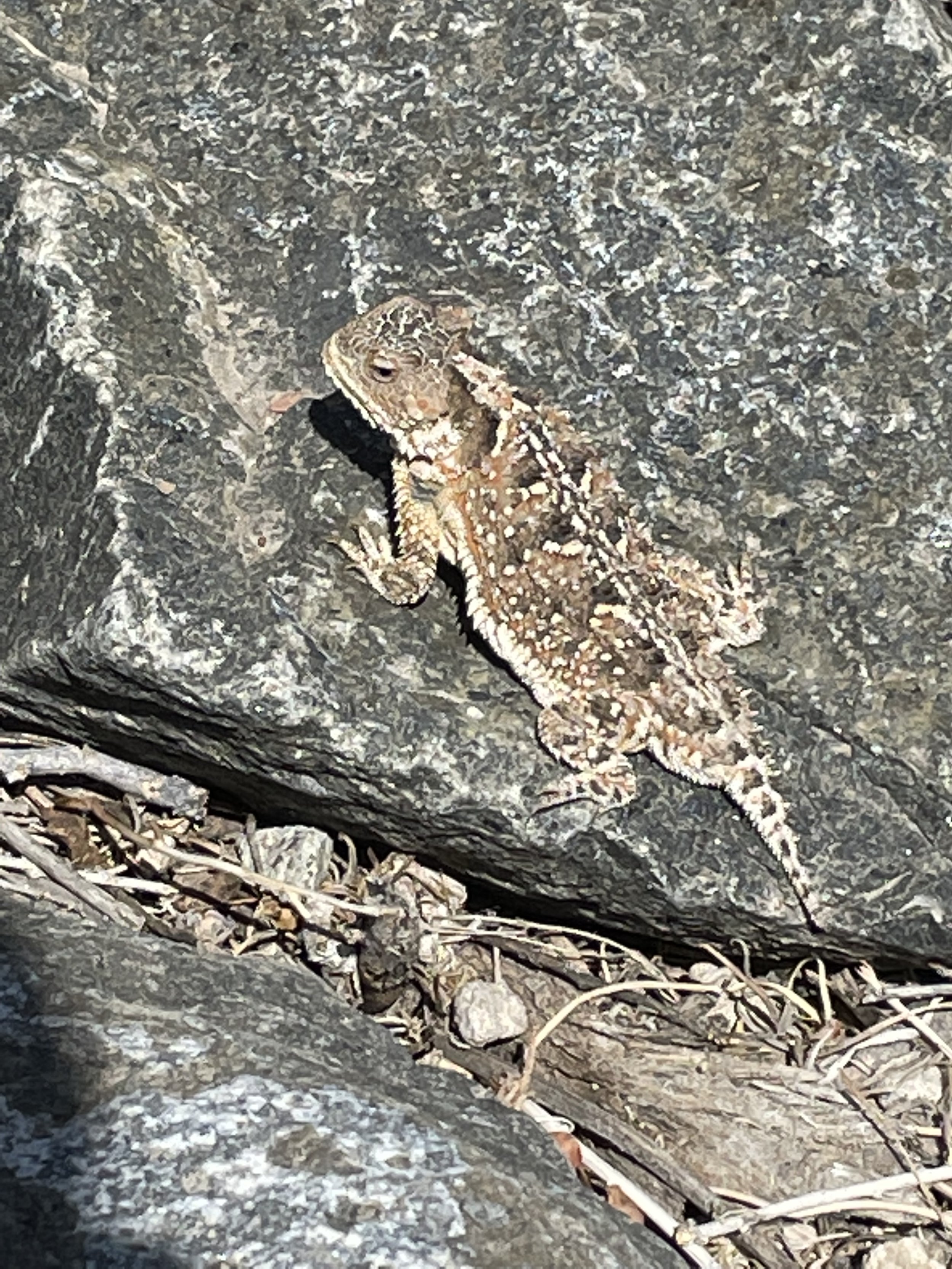Erickson’s Summer Site Update
As summer camp comes to a close at Bluff Lake, mornings have started feeling a little cooler at the site. We’ve also been having a little more rain recently, after a very dry spring and beginning of summer, and I think all the plants and animals (including the human ones!) are glad for it. The lake is as full as it was at the end of May!
Mile High Youth Corps members planting shrubs amongst the existing rabbitbrush near our entrance.
Since the last site update, there are a few new developments at Bluff Lake. We received a Public Garden Grant from the Landscaping with Colorado Native Plants Conference earlier this year. In mid-July, a team of Mile High Youth Corps members, our land manager (me), land management intern, and Weed Warriors volunteers installed 67 native shrubs of seven different species in the xeriscape “garden” next to the building and parking area. While unassuming at first sight, this area is home to nesting birds, cottontail rabbits, toads, and lizards, not to mention the many pollinators that can be seen when plants like the rubber rabbitbrush, four-o-clock, and fernbushes are flowering. Many of the plants, however, are rubber rabbitbrush, and we seized the opportunity to increase the biodiversity of the area by planting four-wing saltbush, fernbush, Western sandcherry, big sagebrush, sand sagebrush, three-leaf (or skunkbush) sumac, and mountain mahogany throughout the garden. We’ve been watering them by hand nearly every day, and they are flourishing! We’re excited to see them grow up and fill out the more barren areas they were planted in over the coming years.
An artificial den for coyotes and foxes.
As anyone who has visited Bluff Lake knows, we have an abundance of prairie dogs on-site. It is an ongoing challenge to find a way to manage the prairie dog colonies in a way that allows the prairie dogs to thrive, while maintaining the plant abundance and diversity in the areas they inhabit. One method we’ve tried to “naturally” manage the prairie dogs is to install perch posts for raptors in the area, to encourage natural predation. This month, we also worked with MHYC members to install artificial dens for coyotes and foxes near prairie dog colonies to further encourage predation, after seeing this technique modeled at Cherry Creek State Park as another management technique based on the predator-prey relationship. Coyotes, foxes, and other wild canids are notoriously skittish and picky about where they set up shop, so time will tell if they end up using the dens we’ve created. Nevertheless, it was a fun project and great conversation-starter as we continue to think about how to co-exist with prairie dogs in an increasingly urbanized Denver.
A greater short-horned lizard (Phrynosoma hernandesi) was observed for the first time at Bluff Lake Nature Center this summer!
There have been several fun animal-related discoveries this summer: one of our game cameras caught not one, but two beavers in the cattails at the east end of the lake! Mysteriously, they’ve only cut down one tree on the property, so it’s likely they’ve been eating other abundant food sources, like the rhizomes (root structures) of cattails, new growth on willows, etc. On the same game camera, we also observed a porcupine at Bluff Lake! This is the first known sighting of a porcupine here, and we couldn’t be more thrilled. That said, porcupines are another great reason why it’s important to stay on trail, and why dogs can’t come to Bluff Lake. We have also seen some new reptiles this summer: yellow-bellied racers, plains garter snakes, and a greater short-horned lizard, which is very rare for this part of the state!
One of the many beautiful invertebrates we found this summer: the larval stage of a copper underwing moth (Amphipyra pyramidoides).
Anali Blue, our land management intern, has finished her position with us as of last week, and is back at school, pursuing a degree in wildlife sciences. Her invertebrate study was a success: we identified 25 new species for Bluff Lake, and over 40 new genera (plural of Genus) of insects and other invertebrates. Thanks, Anali, for all your hard work this summer!
The recent heavy rains we’ve had in Denver have, unfortunately, not been kind to our trail system. Thank you for your patience as we repair the washouts and puddles that have formed. This fall, we will also be working on fire safety and improving accessibility at Bluff Lake.
Our amazing Weed Warriors!
As always, our Weed Warriors volunteer group is meeting on Friday mornings to remove invasive species from the site. This year, we’ve made big strides in removing plants like cutleaf teasel, kochia, curly dock, Jim Hill mustard, and others. If you’d like to join us, please email me at erickson@blufflake.org for more information. We are also always looking for volunteers to pick up trash around the property, as the stormwater that feeds Bluff Lake always brings garbage with it. This opportunity is self-directed, and we have pickers and trash bags available for volunteers to access on their own time. Please email me for more information.
Check out some of the other animals who have made an appearance these late summer months at the video below.
We hope you enjoy the rest of your summer, and look forward to sharing autumn with you at Bluff Lake!







